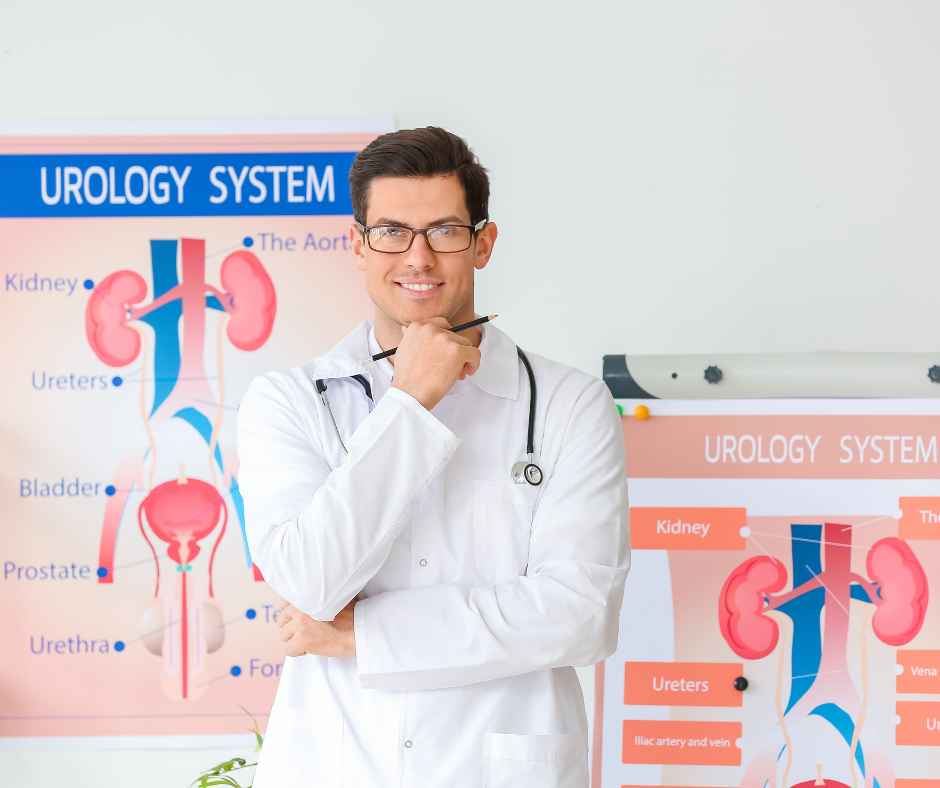Prostatitis extracorporeal shockwave therapy
PROSTATITIS
The application of the shockwave therapy must always be predicted with a full clinical test. Before treatment any bacterial infection and malfunctures of cancer should be excluded.
The urology treatment is mainly focus mainly on the positive impact of the shockwave on local neovascularization, i.e. on the halting of chronic inflammation. These long-term mechanisms are further enhanced by local vasodilatation and immediate relief of pain.
The Shockwave accelerates tissue growth and regeneration.
Chronic inflammation of prostatitis
The prostate is a small glandular-muscular organ located in the pelvis below the bladder, located at the start of an urethral segment. The prostate gland produces a secretion that mixes with the seminal fluid, which increases sperm activity and its resistance to adverse conditions. When the prostate is enlarged, it causes pressure on the urethra, which leads to disruption of the urine flow from the bladder. Disruption of the normal urination process leads to urinary retention, which causes development of kidney stones, cystitis, kidney diseases (pyelonephritis), etc.
Shockwave therapy is used to halt the inflammatory process at a chronic prostatitis and benign prostatic hyperplasia (BPH). Chronic prostatitis is inflammation of the prostate gland. The main cause of this ailment is a gland infection caused by infectious agents. This condition can be caused by the anatomical position of the prostate in the smaller pelvis. The infection may spread to the prostate from the bladder, urethra, rectum, as well as through the blood vessels and lymph vessels of the pelvis. BPH is the growth of the prostate gland – a benign tumor formed as a result of the growth of prostate tissue. It is one of the most common diseases of the genitourinary system of men.

BENIGN PROSTATIC HYPERPLASIA
METHODOLOGY:
Frequency of treatment: every 7 days
Expected number of treatments: 4 -6
The rest is recommended after the shockwave therapy.
– The application of shockwave therapy causes biological processes reminiscent of acute inflammation, which in the later stage causes intensive acceleration of the healing process. Therefore during the first few days after the procedure a rest’s recommendation should be followed.
Complications: Side effects in shockwave therapy are extremely rare. In the event of their occurrence, they usually disappear the day after therapy. The most common side effects are: temporary change in the sensitivity of the treated area – hypersensitivity or slight pain, temporary and local swelling and surface hematoma.
CHRONIC INFLAMMATION OF PROSTATITIS
Frequency of treatment: every 7 days
Expected number of treatments: 4 -6
After the shockwave therapy rest is recommended.
The application of shockwave therapy causes biological processes reminiscent of acute inflammation, which in the later stage causes intensive acceleration of the healing process. Therefore, during the first few days after the procedure a rest recommendation should be followed.
Complications: Side effects in shockwave therapy are extremely rare. In the event of their occurrence, they usually disappear the day after therapy. The most common side effects are: temporary change in the sensitivity of the treated area – hypersensitivity or slight pain, temporary and local swelling and surface hematoma.

BACTERIAL INFLAMMATION OF PROSTATITIS
Frequency of treatment: every 3-4 days
Expected number of treatments: 8 -10
After the shockwave therapy rest is recommended.
The application of shockwave therapy causes biological processes reminiscent of acute inflammation, which in the later stage causes intensive acceleration of the healing process. Therefore, during the first few days after the procedure a rest recommendation should be followed.
Complications: Side effects in shockwave therapy are extremely rare. In the event of their occurrence, they usually disappear the day after therapy. The most common side effects are: temporary change in the sensitivity of the treated area – hypersensitivity or slight pain, temporary and local swelling and surface hematoma.